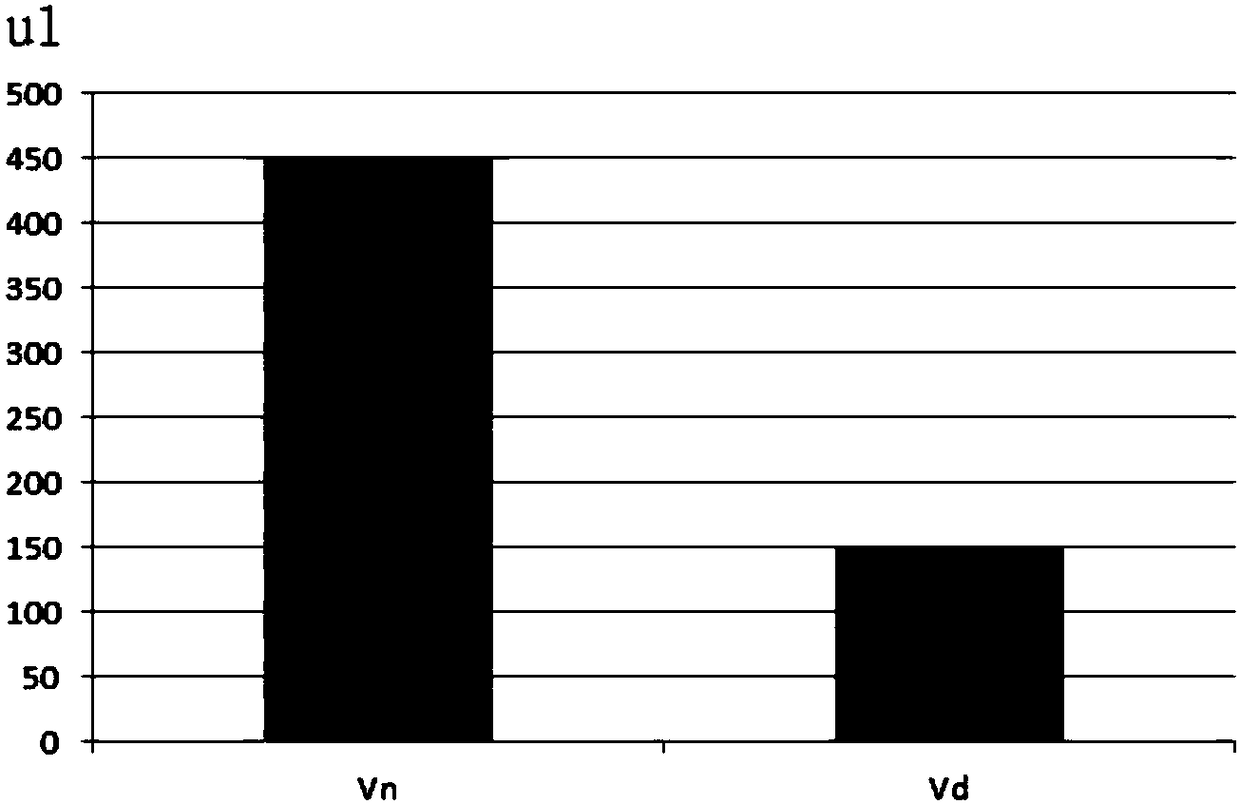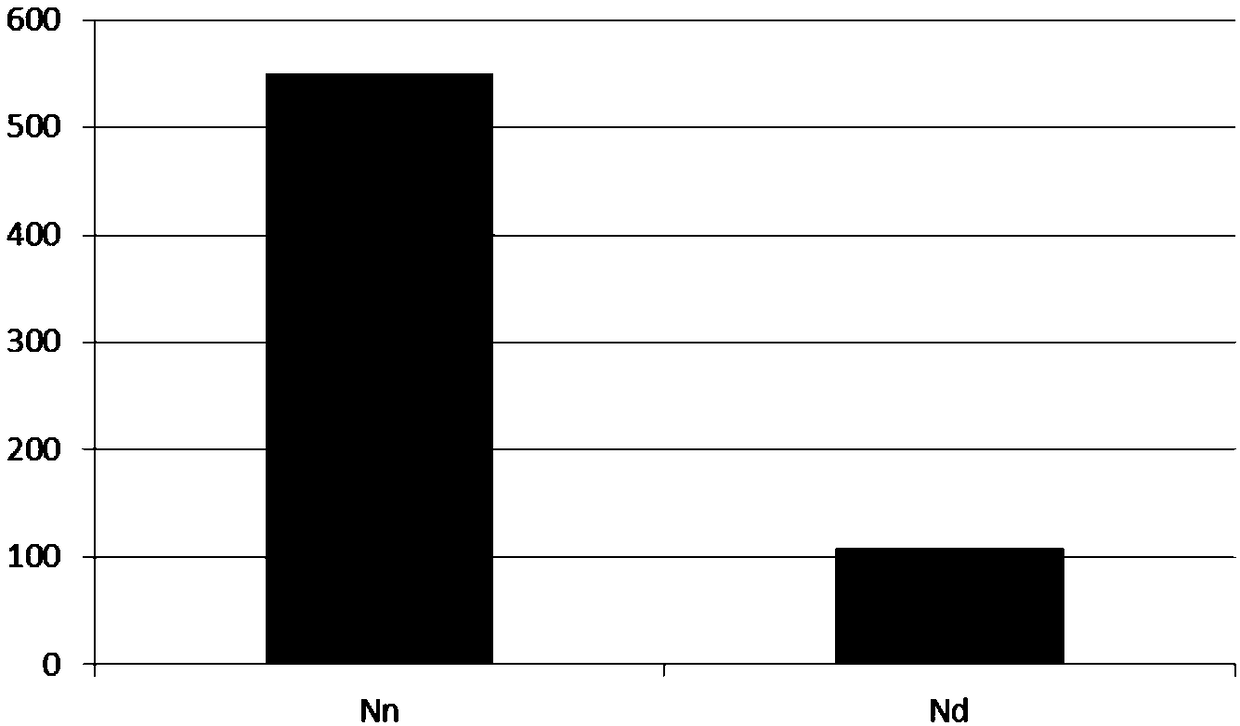Sputum liquefaction reagent, kit containing same and application of kit
A technology of sputum and reagents, which is applied in the field of life sciences, can solve the problems of no change in the ratio of human genome DNA, large loss of cells and pathogenic bacteria, and easy clogging of microfluidic chips, so as to promote liquefaction and reduce human cell genome. DNA content, the effect of meeting the experimental operation requirements
- Summary
- Abstract
- Description
- Claims
- Application Information
AI Technical Summary
Problems solved by technology
Method used
Image
Examples
Embodiment 1
[0034] The sputum liquefaction reagent includes fixative, liquefaction agent, glass beads, exonuclease and buffer, and the kit composed of the sputum liquefaction reagent includes fixative, liquefaction agent, glass beads, exonuclease and buffer, 40μm filter screen six components.
[0035] The specific composition of each component is as follows:
[0036] Fixative: 50% ethanol solution (volume percentage), 100 μM sodium polyaspartate;
[0037] Liquefaction agent: 0.1g DTT (molecular weight 154.25), 0.78g sodium chloride, 0.02g potassium chloride, 0.02g potassium dihydrogen phosphate, 0.112g sodium dihydrogen phosphate, adjust the pH value to 7.6 to 8.0 with 1M NaOH, add dihydrogen Distill water to 100ml, filter to sterilize;
[0038] Glass beads: 1-5mm in diameter, ultrasonically cleaned once in sterile deionized water, washed 2-3 times in sterile deionized water, and autoclaved;
[0039] Exonuclease and buffer: DNase I recombinant 2,000units / ml (NEB Company); exonuclease 2×B...
Embodiment 2
[0041] Embodiment 2: sputum liquefaction process
[0042] Use embodiment 1 sputum liquefaction reagent.
[0043] Transfer the sputum to a 50ml sterile centrifuge tube, add 1 times the volume of fixative and 1 times the volume of liquefaction agent relative to the volume of sputum, add glass beads accounting for 2 / 3 of the volume of the mixture to the mixture, and place it horizontally on Vertical rotation mixer (Shanghai Kehuai Instruments), vertical rotation at room temperature, rotation speed 20r / min, liquefaction for 30 minutes. Then add 2×DNAase I enzyme buffer and enzyme equal to the volume of the liquid (the volume of each liquid is: 1mL sputum, 1mL fixative, 1mL liquefaction agent, 3mL DNAase I enzyme buffer, add 10μL DNAase to each mL enzyme buffer 1 enzyme), after standing at 37°C for 30min, observe that there is no adhesion of protein fibers on the tube wall and no lumps in the liquefied solution, filter through a 40 μm filter screen, and it is qualified if there is...
Embodiment 3
[0047] Take 1 mL of the sputum liquefaction solution after liquefaction by the method of Example 2, and use a microfluidic chip (patent CN107090399A) to purify the bacteria in the liquefied sputum sample, and the chip throughput of the mixed suspension of cultured cells and bacteria reaches 450 microliters ( figure 2 of Vn). The volume of the collected samples after purification of the sputum and the comparative analysis of the colonies on the blood plate were analyzed. Dilute the collection solution 10 and 100 times, take 10 μl of it and apply it on a blood plate under sterile conditions, culture overnight at 37°C, and count the clones.
[0048] see figure 2 and image 3 . It can be seen that the liquefaction reagent has improved the liquefaction efficiency and the bacterial release efficiency, and the volume of the collected liquid and the number of colony clones are about 3 times and 5 times of the volume of the collected liquid obtained by the conventional DTT method....
PUM
| Property | Measurement | Unit |
|---|---|---|
| diameter | aaaaa | aaaaa |
Abstract
Description
Claims
Application Information
 Login to View More
Login to View More - R&D
- Intellectual Property
- Life Sciences
- Materials
- Tech Scout
- Unparalleled Data Quality
- Higher Quality Content
- 60% Fewer Hallucinations
Browse by: Latest US Patents, China's latest patents, Technical Efficacy Thesaurus, Application Domain, Technology Topic, Popular Technical Reports.
© 2025 PatSnap. All rights reserved.Legal|Privacy policy|Modern Slavery Act Transparency Statement|Sitemap|About US| Contact US: help@patsnap.com



